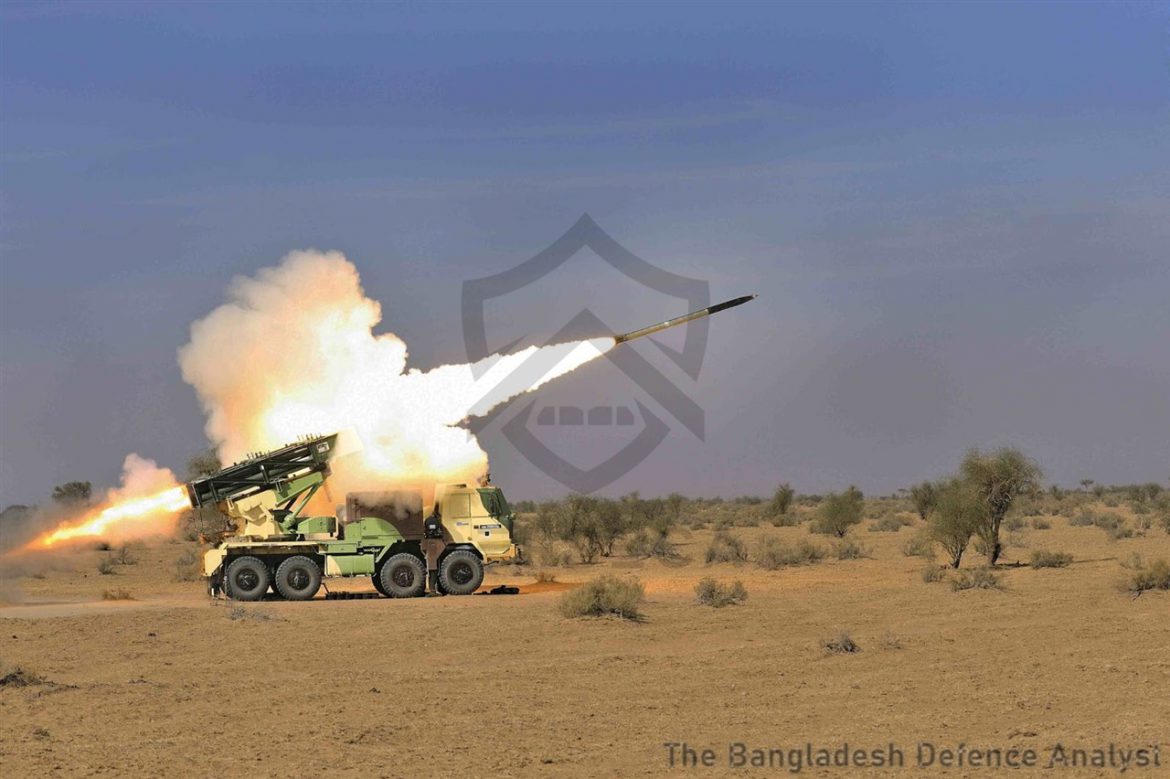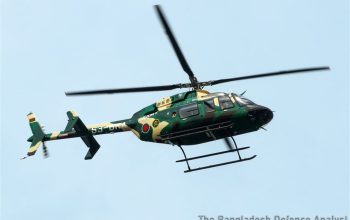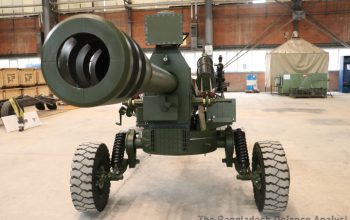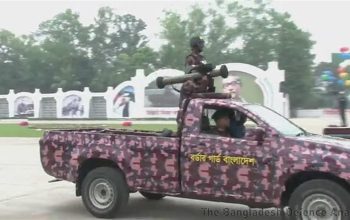The Bangladesh Army and Navy decided to procure several military combat support equipment from India to utilise the $500 million LoC offered by the Indian government to implement its strategic designs.
Bangladesh as a friendly country to India has carefully sought to ensure secondary equipment is procured so that any acquisition from India does not impede its armed forces operational capabilities.
The Bangladesh Defence Analyst is providing details about the Indian-made armaments, as those are not currently in service with Bangladesh Armed Forces.
Of the three armed services, the Bangladesh Air Force has not shown any interest in Indian-made aircraft or equipment, possibly over safety and security concerns.
BLT-72 Armoured Bridge Layer Tank
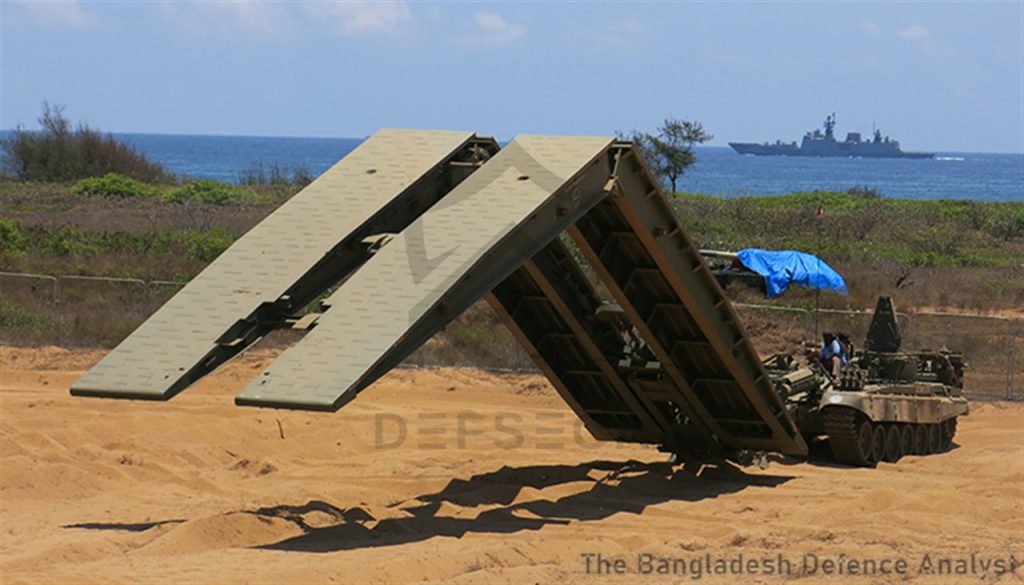
The BLT-72 armoured bridge layer is designed to negotiate obstacles on the battlefield, be it man-made or natural trenches or creeks. The BLT-72 as the name suggests is built on the Soviet T-72 tank chassis that are in wide service around the world even today.
The bridge segment can be launched in manual, electro-mechanical and automatic modes taking approximately 3 to 5 minutes to accomplish with a crew of three personnel including a driver.
The armoured bridge tank can launch two lengths of scissor bridges including a 20m span rated for MLC 60 and a 22m span rated for MLC 70.
The BLT-72 is equipped with a multi-barrel smoke discharger and a machine gun for self-defence. It can be optionally fitted with a KMT-6 mine plough in the front.
The total combat weight of the bridge is 8,800 kg.
The Bangladesh Army is set to procure 5 BLT-72 with spares and optional KMT-76 mine plough at a cost of $10 million.
Armoured Engineer Reconnaissance Vehicle
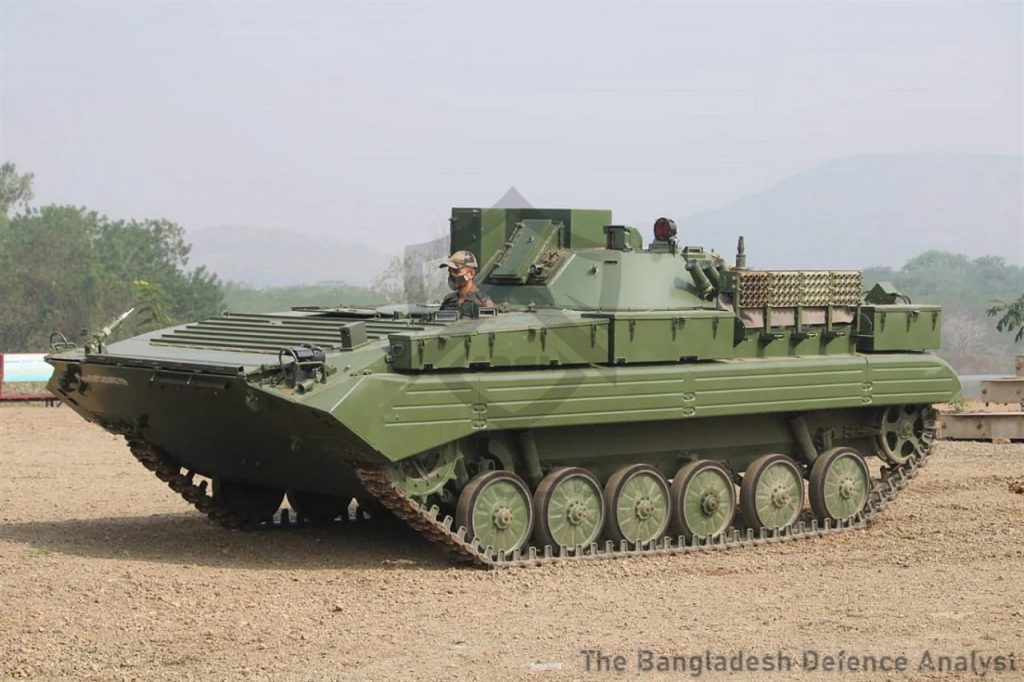
The Armoured Engineer Reconnaissance Vehicle (AERV) was developed in India by the Vehicles Research Development Establishment (VRDE) and manufactured by Bharat Electronics Ltd (BEL). It is designed to be used by combat engineers for undertaking land and underwater surveys in hostile terrains. It provides support to combat engineer elements for both offensive and defensive operations in plains, riverine and desert environments.
The AERV is built on the BMP-IIK amphibious infantry combat vehicle chassis enabling military engineers to navigate terrain using the military grid-coordinate system, measure and plot underwater beds, water current of rivers, soil testing for determination of movement by other military vehicles, measurement of slopes and heights of riverbanks. The AERV can be operated in day or night conditions.
Tata Mine Protected Vehicle

The Tata MPV is manufactured by Tata Motors Defence Solutions in India. It is built on a 4×4 chassis with a conventional layout with an engine at forward location, a crew cab in the centre, and a troop compartment at the rear. The MRAP can accommodate a crew of 12 troops and 2 crewmen.
The MPV measures 6.58 m in length and 2.60 in width. Its GVW is 14.3t and can carry a maximum payload of 1,400 kg.
There are 9 glass windows for observation each fitted with a firing port and two roof hatches.
An onboard electro-optic and advanced navigational system provide essential observation and situational awareness capabilities. The EO system integrates a day-colour camera, a thermal imaging camera, a laser range finder, and a laser designator for high-quality image processing and automatic video training of objects.
Self-defence is provided by light or heavy machine gun mounted on a turret on the roof. The occupants of the vehicle are protected at NIJ III equivalent levels against 7.62mm guns fired from 10m range. The MPV can survive 14kg TNT equivalent explosive blast under the monocoque hull and 21kg TNT explosion from under any wheel. The MPV can withstand IEDs and AP mines according to its manufacturer.
A Cummins ISBe EURO III turbocharged, after-cooled diesel engine coupled with a six-speed manual gearbox develops 242hp power at 2,500rpm. Its maximum speed is 80 km/h and power to weight ratio is 16hp/t.
The MPV has a ground clearance of 315 m and a turning circle of 16m. It incorporates a leaf-spring non-independent suspension system with run-flat tyres, drum brakes, and ABS.
The Bangladesh Army is purchasing 11 Tata MPVs for deployment in UN Peacekeeping operations at a cost of $2.2 million.
Bangladesh Navy
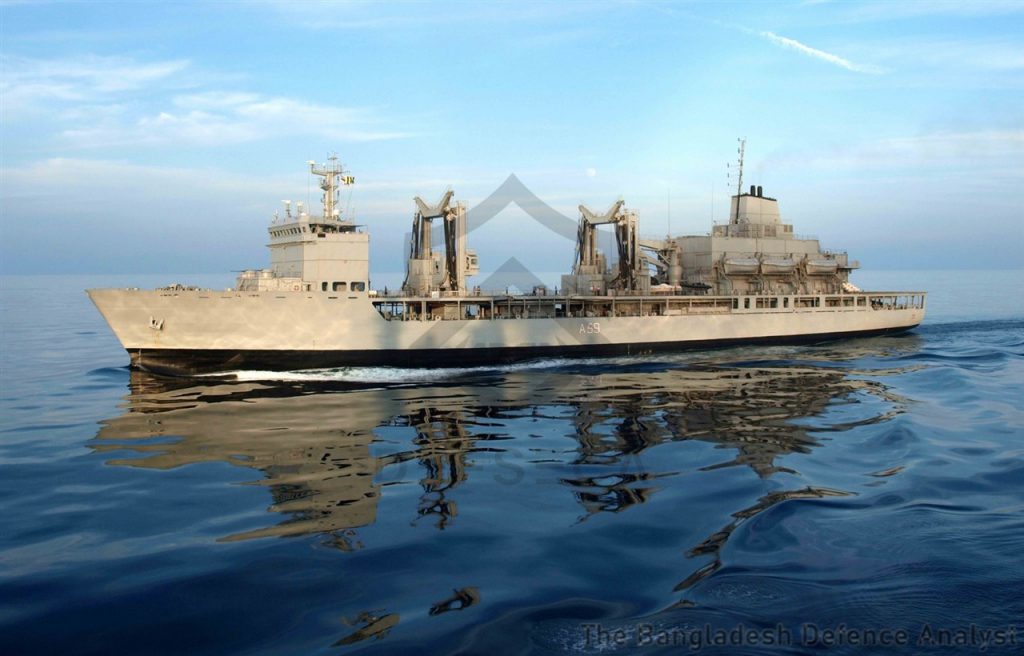
The Bangladesh Navy put forward a requirement for auxiliary support vessels such as a fleet replenishment ship, logistics ship, ocean-going tug boat, and floating dock, all of which can help develop and maintain its capabilities.
Usually, the Bangladesh Navy requires any ship or equipment to be of a successful design that is currently in service. This means the list provided to the Indian government might be similar to those already in service with the Indian Navy including something like the Aditiya class fleet replenishment oiler, Gaj class ocean-going tugboats, and FDN-2 floating dock.
In this case also the Bangladesh Navy did not send any requirement for warships or any combat capable vessels to India to avert any security concerns or impact on its operational capabilities in case relations with India sowers in the future.
Conclusion
The Bangladesh Armed Forces opted for equipment it critically needs to add a new dimension to its operational capabilities, or equipment having non-combat roles to avert undue reliance on India in the defence sector. Initially, a small number of equipment will be purchased to test quality, operations on the field, and MRO. The military will be able to determine the true nature or capability of the Indian supply chain.
While the purchase will utilise the Indian defence loan, it is in no way designed to replace larger defence equipment suppliers such as China, Turkey, Russia, US and EU.
Bangladesh hopes through this exercise it can establish good relations with India without allowing India’s defence apparatus to penetrate its defence sector overtly or cause disruption to its military capabilities.

